Challenging dated language in operating
agreements
08 MAY 2019 7:11 AM
The language in today’s hotel operating agreements creates a gap and falls short of aligning owners’ interests with
operators’ performance.
Hotel operating agreements today fall short of aligning owners’ interests with operators’ performance. This gap is widening as the industry continues to rely
on legacy contract language that fails to address significant changes in many aspects of the hotel business.
Taking inspiration from a previous article published as part of HNN’s ISHC Series, “Hotel operating agreements: The modern-day dinosaur,” which
highlighted areas in which hotel operating agreements (HOAs) fail to keep pace with operating realities, this article explores alternative approaches to re-align
the interests of owners and operators, specifically in the areas of performance and fee structure.
Performance tests
Most hotel owners expect that the performance test will allow them to change the operator (and, for brand operators,
the hotel brand) if the hotel is not achieving the owner’s investment objectives and the owner believes that another
operator would be able to improve the hotel’s performance. However, the most common form of HOA performance
test does not accomplish this, in part because it only considers one (of many) investment criteria and in part because it
uses the performance of comparable hotels geographically near the hotel as the baseline for how the hotel should
perform. The following list highlights some of the issues with the most common performance test provisions:
The operator has to fail the test(s) for two consecutive years, after a lockout period: This can mean that a
hotel is performing significantly below expectations for up to five years before the owner can make a change. With a
term of 10 to 15 years or less, this can make the owner’s remedies meaningless (especially if combined with an
operator cure right, discussed below).
The standard first test is based on the hotel achieving a fixed percentage of its budgeted net operating
income for the year: The percentage that has to be met is fixed at the beginning of the term and is not reset as the
operator becomes more efficient at managing revenue and expenses. Alternative approaches might include periodic
resets of the percentage over time or having the actual NOI tested against the pro forma that the operator prepared, on
which the owner underwriting is based.
The standard test has a second prong, which is based on a minimum level of RevPAR performance
compared to the hotel’s competitive set: This second test is intended to protect the operator from being penalized
for economic effects that impact the market as a whole. However, too often the threshold is set without a thorough
analysis of the hotel’s position vis-à-vis its competitive set. For example, a hotel that routinely has revenue per available
room equal to 120% of the competitive set’s RevPAR should not have a performance threshold of 90% of the
competitive set’s RevPAR. Instead, the threshold could be based on the hotel’s projected RevPAR for its first year with a margin of error (for example,
10%). In addition, where many HOAs allow the competitive set to be adjusted as hotels open or rebrand in the market area, most HOAs do not provide for a
corresponding adjustment to the performance threshold.
The standard test allows the operator to “cure” performance failure by payment of some portion of the shortfall, with at least one cure right
and often more: When combined with a two- to three-year lockout period and a two-year test period, a cure right may leave the owner with an underperforming
operator or brand for up to seven years. Although a cure right is appropriate for termination triggers that can be easily tripped, in most
circumstances, the performance test thresholds are set at “worst-case scenario.”
If the hotel fails the performance test, the owner’s remedy is to terminate the HOA: However, in many cases, the owner may not want to terminate,
as the manager and/or the brand may still be a good fit for the hotel but the economics of the HOA are broken. Alternative remedies might be to defer some
portion of the operator’s fees until sale or the next financing, to reduce the operator’s fees until the hotel has reached a threshold net operating income or to
allow the owner greater control over the budget and certain material operating decisions at the hotel until the hotel meets the performance tests.
Opinions
By Kristie Dickinson and Cecilia Gordon
Copyright © 2008-2019 STR, Inc. Page 1 / 2
and often more: When combined with a two- to three-year lockout period and a two-year test period, a cure right may leave the owner with an underperforming
operator or brand for up to seven years. Although a cure right is appropriate for termination triggers that can be easily tripped, in most
circumstances, the performance test thresholds are set at “worst-case scenario.”
If the hotel fails the performance test, the owner’s remedy is to terminate the HOA: However, in many cases, the owner may not want to terminate,
as the manager and/or the brand may still be a good fit for the hotel but the economics of the HOA are broken. Alternative remedies might be to defer some
portion of the operator’s fees until sale or the next financing, to reduce the operator’s fees until the hotel has reached a threshold net operating income or to
allow the owner greater control over the budget and certain material operating decisions at the hotel until the hotel meets the performance tests.
The following might also be considered as alternatives to the standard tests in the next generation of HOAs, to better align with an owner’s objectives:
The owner’s investment criteria
Depending on the owner, this may range from:
Annual cash flow sufficient to meet distribution requirements to the owner’s investors.
An overall return on the equity investment.
An increase in the value of the hotel over the term.
Adding value to the owner’s adjacent properties/uses (e.g. a retail component of a mixed-use project, for-sale residences or driving revenue of an
adjacent resort).
Improving competitive positioning.
Maintaining the hotel to minimize owner capital outlay.
The owner’s time horizon
The owner may want to change the performance tests over the term or, towards the end of the term, to switch from a performance test to an incentive fee
based on the increase in the fair market value of the hotel above the market. If the owner is bringing in an operator to turn a hotel around, a single-year
performance test that applies right away may be the most appropriate.
The hotel’s peer group
Owners might consider these alternative tests:
A test of brand strength that compares loyalty program contributions to other brands.
A test against the other hotels most commonly searched with the hotel on a large hotel-aggregator site.
A single-prong test that excuses the operator from failure caused by general economic events, which would replace any competitive-set or market test.
Base management and incentive fees
Two decades ago, revenue-based fees reflected a more reliable correlation between RevPAR and profit than exists today. Industry dynamics have evolved,
costs of acquisition have increased two-fold and profit margins have been steadily decreasing, rendering this methodology less effective. For example, 20
years ago profit margins on rates were much more consistent—owners and operators knew how much of every $1 in rate would flow to the bottom line.
Today, there is so much variability in the cost of a roomnight depending on what booking channel it comes in from, that net RevPAR is a much better
reflection of the true value of a roomnight. Net RevPAR, calculated as (room revenue – distribution costs) / number of available rooms can tell a very
different story from that inferred from top-line performance alone. Aligning performance with top-line revenue encourages volume, but provides no assurance
that management is getting “the right” business (i.e. the most profitable mix of business). Not all RevPARs are created equal!
The most common structure for management fees in HOAs today is:
Base fee: A fixed percentage of gross revenues, including gross revenues from rooms, food and beverage and all other operations managed by the
operator (such as spa).
Incentive fee: A fixed percentage of gross operating profit (gross revenues less operating expenses) after deduction for the FF&E reserve
contributions, insurance premiums, equipment lease rentals and a fixed return to the owner on its capital invested in the hotel (the owner’s priority).
The standard base fee only reflects the revenue component of the hotel’s economics and does not reflect the operator’s services relating to controlling
expenses or to driving the profit for the hotel. This does not reflect the reality that owners are hiring an operator to manage not only business delivery, but also
to make revenue decisions based on an analysis of profit contribution, while also managing all expenses to fluctuations in business volume. The profit
component of the operator’s performance is captured in the standard incentive fee but should be part of the operator’s base compensation. A base fee that
encourages the operator to pursue the most profitable business, and the most effective expenditures might be a two-pronged fee that links to revenue and
GOP, or perhaps GOP exclusively. For example:
Fifty percent of the base fee is X% of gross revenue and 50% of the base fee is X% of GOP; or
The base fee starts at X% of gross revenue and then X basis points are added for every X% of incremental GOP profit margin.
If the profit component of the operator’s performance is reflected in a revised base fee, the incentive fee can then begin to act as an actual incentive, driving
exceptional performance in an area that is particularly important to the owner. Examples of possible alternative incentive fees (some of which do exist in the
market today, albeit on a more limited basis) are:
Paying the operator a portion of the sale price above a hurdle based on the owner’s base-case return.
A percentage of gross revenue from increased bookings through more profitable booking channels.
Ratcheting up the percentage of the base fee for each period in which there are increased (positive) reviews on designated social media sites.
We hope this provides a place to start when you look at the next HOA on your screen (or desk, for those of us still tied to hard copies) in an effort to better
align the owner’s investment goals and the operator’s performance. There are options!
Kristie Dickinson is EVP of CHMWarnick, a globally recognized leader in hotel asset management and owner advisory services. Cecilia T. Gordon is a Director and Co-Chair of the Hospitality and
Recreation Group for the law firm of Goulston & Storrs PC. Ms. Dickinson and Ms. Gordon are both based in the Boston area, and serve on the Board of the International Society of Hospitality
Consultants (ISHC).
The opinions expressed in this column do not necessarily reflect the opinions of Hotel News Now or its parent company, STR and its affiliated companies. Bloggers published on this site are given the
freedom to express views that may be controversial, but our goal is to provoke thought and constructive discussion within our reader community. Please feel free to comment or contact an editor with
any questions or concerns.
Copyright © 2008-2019 STR, Inc. Page 2 / 2

